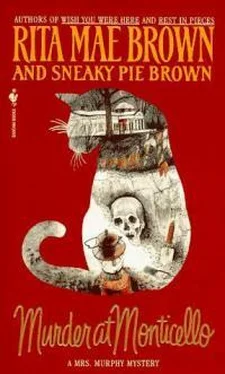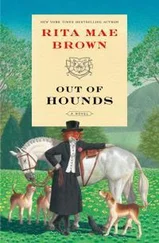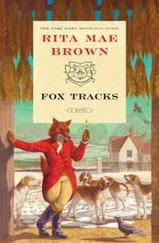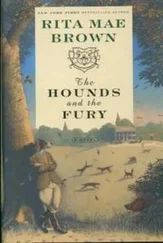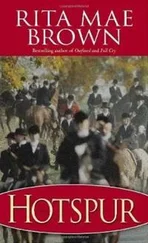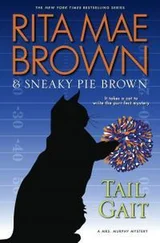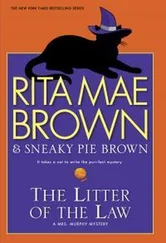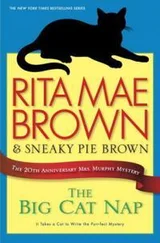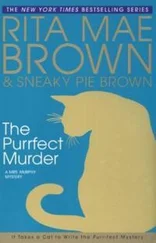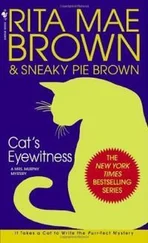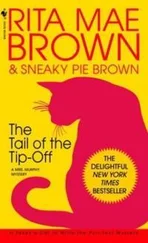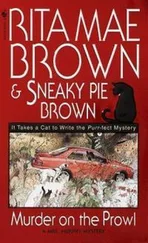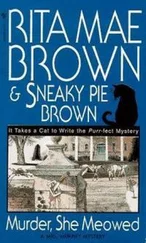“Think Kimball will be out there?” Susan asked.
“One way to find out.” Harry walked down to the south side of the house, picking up the straight road that was called Mulberry Row. Here the work of the plantation was carried out in a smithy as well as in eighteen other buildings dedicated to the various crafts: carpentry, nail making, weaving, and possibly even harness making and repair. Those buildings vanished over the decades after Jefferson’s death when, a quarter of a million dollars in debt—roughly two and a half million dollars today—his heirs were forced to sell the place he loved.
Slave quarters also were located along Mulberry Row. Like the other buildings, these were usually constructed of logs; sometimes even the chimneys were made of logs, which would occasionally catch fire, so that the whole building was engulfed in flames within minutes. The bucket brigade was the only means of fire-fighting.
As Harry and Susan walked through the fog, their feet squished in the moist earth.
“If you feel a descent, you know we’ve keeled over into the food garden.” Harry stopped for a moment.
“We can stay on the path and go slow. Harry, Kimball isn’t going to be out here in this muck.”
But he was. Wearing a green oilskin Barbour coat, a necessity in this part of the world, big Wellies on his feet, and a water-repellent baseball hat on his head, Kimball resembled any other Virginia gentleman or gentlewoman on a misty day.
“Kimball!” Harry called out.
“A fine, soft day,” he jubilantly replied. “Come closer, I can’t see who’s with you.”
“Me,” Susan answered.
“Ah, I’m in for a double treat.” He walked up to greet them.
“How can you work in this?” Susan wondered.
“I can’t, really, but I can walk around and think. This place had to function independently of the world, in a sense. I mean, it was its own little world, so I try to put myself back in time and imagine what was needed, when and why. It helps me understand why some of these buildings and the gardens were placed as they are. Of course, the people working under the boardwalks—that’s what I call the terraces—had a better deal, I think. Would you two damsels like a stroll?”
“Love it.” Harry beamed.
“Kimball, how did you come to archaeology?” Susan asked. Most men Kimball’s age graduating from an Ivy League college were investment bankers, commodities brokers, stockbrokers, or numbers crunchers.
“I liked to play in the dirt as a child. This seemed a natural progression.” He grinned.
“It wasn’t one of those quirks of fate?” Harry wiped a raindrop off her nose.
“Actually, it was. I was studying history at Brown and I had this glorious professor, Del Kolve, and he kept saying, ‘Go back to the physical reality, go back to the physical reality.’ So I happened to notice a yellow sheet of paper on the department bulletin board—isn’t it odd that I can still see the color of the flyer?—announcing a dig in Colonial Williamsburg. I never imagined that. You see, I always thought that archaeology meant you had to be digging up columns in Rome, that sort of thing. So I came down for the summer and I was hooked. Hooked on the period too. Come on, let me show you something.”
He led them to his office at the back of the attractive gift shop. They shook off the water before entering and hung their coats on the wooden pegs on the wall.
“Cramped,” Susan observed. “Is this temporary?”
He shook his head. “We can’t go about building anything, you know, and some of what has been added over the years—well, the damage has been done. Anyway, I’m in the field most of the time, so this suffices, and I’ve also stashed some books in the second floor of the Big House, so I’ve a bit more room than it appears. Here, look at this.” He reached into a pile of horseshoes on the floor and handed an enormous shoe to Harry.
She carefully turned the rusted artifact over in her hands. “A toe grab. I can’t make out if there were any grabs on the back, but possibly. This horse had to do a lot of pulling. Draft horse, of course.”
“Okay, look at this one.” He handed her another.
Harry and Susan exclaimed at this shoe. Lighter, made for a smaller horse, it had a bar across the heel area, joining the two arms of the shoe.
“What do you think, Susan?” Harry placed the shoe in her friend’s hands.
“We need Steve O’Grady.” Susan referred to an equine vet in the county, an expert on hoof development and problems and strategies to overcome those problems. He was a colleague of Fair Haristeen, whose specialty was the equine reproductive system. “But I’d say this belonged to a fancy horse, a riding horse, anyway. It’s a bar shoe . . .”
“Because the horse had a problem. Navicular maybe.” Harry suggested a degenerative condition of the navicular bone, just behind the main bone of the foot, the coffin bone, often requiring special shoeing to alleviate the discomfort.
“Perhaps, but the blacksmith decided to give the animal more striking area in the back. He moved the point of contact behind the normal heel area.” Kimball placed his hand on his desk, using his fingers as the front of the hoof and his palm as the back and showed how this particular shoe could alter the point of impact.
“I didn’t know you rode horses.” Harry admired his detective work on the horseshoe.
“I don’t. They’re too big for me.” Kimball smiled.
“So how’d you know this? I mean, most of the people who do ride don’t care that much about shoeing. They don’t learn anything.” Susan, a devout horsewoman, meaning she believed in knowing all phases of equine care and not just hopping on the animal’s back, was intensely curious.
“I asked an expert.” He held out his palms.
“Who?”
“Dr. O’Grady.” Kimball laughed. “But still, I had to call around, dig in the libraries, and find out if horseshoeing has changed that much over the centuries. See, that’s what I love about this kind of work. Well, it’s not work, it’s a magical kind of living in the past and the present at the same time. I mean, the past is ever informing the present, ever with us, for good or for ill. To work at what you love—a heaping up of joys.”
“It is wonderful,” Harry agreed. “I don’t mean to imply that what I do is anything as exalted as your own profession, but I like my job, I like the people, and most of all, I love Crozet.”
“We’re the lucky ones.” Susan understood only too well the toll unhappiness takes on people. She had watched her father drag himself to a job he hated. She had watched him dry up. He worried so much about providing for his family that he forgot to be with his family. She could have done with fewer things and more dad. “Being a housewife and mother may not seem like much, but it’s what I wanted to do. I wouldn’t trade a minute of those early years when the kids were tiny. Not one second.”
“Then they’re the lucky ones,” Harry said.
Kimball, content in agreement, pulled open a drawer and plucked out a bit of china with a grayish background and a bit of faded blue design. “Found this last week in what I’m calling Cabin Four.” He flipped it over, a light number showing on its reverse side. “I’ve been keeping it here to play with it. What was this bit of good china doing in a slave cabin? Was it already broken? Did the inhabitant of the little cabin break it herself—we know who lived in Cabin Four—and take it out of the Big House to cover up the misdeed? Or did the servants, forgive the euphemism, go straight to the master, confess the breakage, and get awarded the pieces? Then again, what if the slave just plain took it to have something pretty to look at, to own something that a rich white person would own, to feel for a moment part of the ruling class instead of the ruled? So many questions. So many questions.”
Читать дальше
